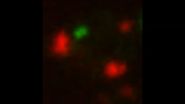(Press-News.org) Stanford, CA—When it comes to cellular architecture, function follows form.
Plant cells contain a dynamic cytoskeleton which is responsible for directing cell growth, development, movement, and division. So over time, changes in the cytoskeleton form the shape and behavior of cells and, ultimately, the structure and function of the organism as a whole. New work led by Carnegie's David Ehrhardt hones in on how one particular organizational protein influences cytoskeletal and cellular structure in plants, findings that may also have implications for cytoskeletal organization in animals. It is published in Current Biology.
A cell's cytoskeleton features microtubules, which consist of the protein tubulin assembled into long tubular polymers. Tubulin and tubulin-like proteins are highly conserved evolutionarily, found in some bacteria, fungi, higher plants, and animals. They play critical roles in how cells of these organisms grow and divide.
The work from Ehrhardt's team—which includes Carnegie's Ankit Walia (the lead author), Masayoshi Nakamura, and Dorianne Moss—focuses on microtubule involvement in the growth of plant cells after cell division and discovers a new role for a protein previously known to be crucial for cell division in mammals.
The role of microtubules in animal cell division is well understood. As all school-children learn, cells divide using a process called mitosis, which consists of a number of phases during which duplicate copies of the cell's DNA-containing chromosomes are separated into two distinct cells. A scaffold made of microtubules is crucial for pulling the duplicated halves of the chromosome apart and directing them to each of the new daughter cells.
There is a major difference between microtubule-assisted cell division in plants and animals, however. In animal cells (as well as yeast cells), the microtubules that act to separate chromosomes during cell division are usually organized around a central structure. The arrays of microtubules facilitating plant cell division lack these kinds of central hubs. (Although sometimes in animal cells there are also microtubule arrays that don't form around a center, either.)
How microtubules are properly positioned to perform their function without the aid of a central organizing structure is poorly understood and is the focus of Ehrhardt's present research.
"The quantitative live-cell studies that we have helped to pioneer in plant cells has allowed us to visualize molecular mechanisms underlying the organization of microtubules that lack a central hub structure," Ehrhardt said.
What they found is that a protein called GCP-WD, which plays a key role in the central microtubule organizational structure in mammals, is also crucial in plants. It is key for positioning the formation of individual microtubules in plant cells and also important for the organization and function of plant cell skeletons overall, beyond just the division process.
Thus, GCP-WD is a key factor in determining the form and the function of plant cells, by influencing their architecture.
"In addition to the new insights into plant cell microtubule organization, these observations of GCP-WD function will be of interest to scientists studying microtubules in animals, where GCP-WD has been challenging to observe it in action," Ehrhardt added.
INFORMATION:
This work was supported by endowment funds of the Carnegie Institution for Science and an HFSP fellowship for a post-doctoral fellow.
The Carnegie Institution for Science (carnegiescience.edu) is a private, nonprofit organization headquartered in Washington, D.C., with six research departments throughout the U.S. Since its founding in 1902, the Carnegie Institution has been a pioneering force in basic scientific research. Carnegie scientists are leaders in plant biology, developmental biology, astronomy, materials science, global ecology, and Earth and planetary science.
Cell architecture: Finding common ground
2014-10-16
ELSE PRESS RELEASES FROM THIS DATE:
Misfolded proteins clump together in a surprising place
2014-10-16
KANSAS CITY, MO — Scientists at the Stowers Institute for Medical Research have made a surprising finding about the aggregates of misfolded cellular proteins that have been linked to aging-related disorders such as Parkinson's disease. The researchers report their results in the October 16, 2014 online issue of the journal Cell.
Using 3-D time-lapse movies to track the fate of misfolded proteins in yeast cells, the researchers determined that about 90 percent of aggregates form on the surface of the endoplasmic reticulum (ER), a location of protein synthesis in ...
That pregnant feeling makes a fly start nesting
2014-10-16
DURHAM, N.C. -- Across the animal kingdom, it's not uncommon for pregnancy to change an expectant mom's behavior. Even female flies have their own rudimentary way of "nesting," which appears to be brought on by the stretch of their egg-filled abdomens rather than the act of mating, according to a Duke study published online October 16 in Cell Reports.
After mating, the female fruit fly Drosophila melanogaster dramatically shifts priorities as she prepares to lay eggs.
"For example, the virgin flies are interested in sex. Once they're mated, it's very striking -- they ...
Study recommends ongoing assessment of impact of offshore wind farms on marine species
2014-10-16
SOLOMONS, MD (October 16, 2014)--Offshore wind power is a valuable source of renewable energy that can help reduce carbon emissions. Technological advances are allowing higher capacity turbines to be installed in deeper water, but there is still much unknown about the effects on the environment. In a recent paper, University of Maryland Center for Environmental Science researcher Helen Bailey and colleagues review the potential impacts of offshore wind developments on marine species and make recommendations for future monitoring and assessment as interest in offshore wind ...
MicroRNA molecules serve as on/off switches for inflammation
2014-10-16
(SALT LAKE CITY)—University of Utah scientists have identified two microRNA molecules that control chronic inflammation, a discovery that one day may help researchers prevent certain fatal or debilitating conditions before they start.
"We're living at a time where the aging population is growing," said Ryan O'Connell, D.Phil., assistant professor of pathology, whose lab made the discovery. "The question is: how can we predict and prevent the onset of disorders that emerge upon growing older?"
The research will be published this Thursday in Immunity, a top immunology ...
Scripps Research Institute scientists identify trigger for crucial immune system cell
2014-10-16
LA JOLLA, CA—October 16, 2014—Scientists at The Scripps Research Institute (TSRI) have identified the long-sought activating molecules for a rare but crucial subset of immune system cells that help rally other white blood cells to fight infection.
In the process, the team also uncovered a previously unsuspected link between the mammalian immune system and the communication systems of simpler organisms such as bacteria.
The findings, published online ahead of print on October 16 by the journal Immunity, could lead to novel therapeutic approaches for diseases ...
Pitt/McGowan Institute team discovers stem cells in the esophagus
2014-10-16
PITTSBURGH, Oct. 16, 2014 – Despite previous indications to the contrary, the esophagus does have its own pool of stem cells, said researchers from the University of Pittsburgh School of Medicine in an animal study published online today in Cell Reports. The findings could lead to new insights into the development and treatment of esophageal cancer and the precancerous condition known as Barrett's esophagus.
According to the American Cancer Society, more than 18,000 people will be diagnosed with esophageal cancer in the U.S. in 2014 and almost 15,500 people will ...
Mysterious Midcontinent Rift is a geological hybrid
2014-10-16
An international team of geologists has a new explanation for how the Midwest's biggest geological feature -- an ancient and giant 2,000-mile-long underground crack that starts in Lake Superior and runs south to Oklahoma and to Alabama -- evolved.
Scientists from Northwestern University, the University of Illinois at Chicago (UIC), the University of Gottingen in Germany and the University of Oklahoma report that the 1.1 billion-year-old Midcontinent Rift is a geological hybrid, having formed in three stages: it started as an enormous narrow crack in the Earth's crust; ...
Simple test may predict surgical wound healing complications
2014-10-16
MAYWOOD, Ill. (Oct. 16, 2014) -- As many as 35 percent of patients who undergo surgery to remove soft tissue sarcomas experience wound-healing complications, due to radiation they receive before surgery.
Now a study has suggested that a simple test called transcutaneous oximetry may be able to predict which of these patients are most likely to experience wound-healing complications, potentially enabling surgeons to take extra precautions.
Lukas Nystrom, MD, of Loyola University Medical Center presented his findings during the 2014 annual meeting of the Musculoskeletal ...
Should first responders use acupuncture & integrative medicine in natural disasters & battle zones?
2014-10-16
New Rochelle, NY, October 16, 2014—Delivering traditional emergency medical care at ground zero of natural disasters and military conflicts is challenging. First responders trained in simple integrative medicine approaches such as acupuncture, hypnosis, or biofeedback can provide adjunctive treatment to help relieve patients' pain and stress. How to teach and utilize modified techniques and their potential benefit are described in a Review article in Medical Acupuncture, a peer-reviewed journal from by Mary Ann Liebert, Inc., publishers. The article is available free ...
New study finds that the probability of unprotected intercourse in hookups doubles between freshman
2014-10-16
An article released by Social Forces titled, "Casual Contraception in Casual Sex: Life-Cycle Change in Undergraduates' Sexual Behavior in Hookups" by Jonathan Marc Bearak (New York University) explores the changes in undergraduate uncommitted sexual behavior during years 1–4 of college. The article provides reasoning for the decline in the use of condoms, and explains how changes in the odds of coitus and condom use depend on fam¬ily background, school gender imbalance, and whether the partners attend the same college.
The results show that the odds of unprotected ...





